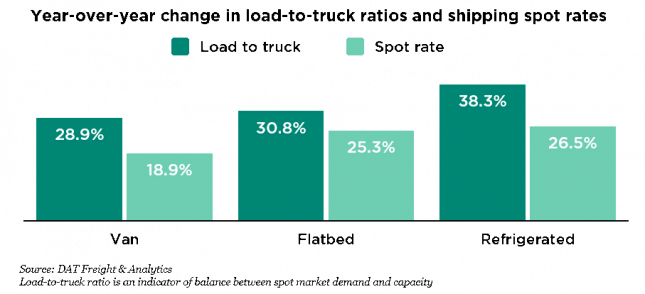November Agriculture Markets Review
Ag provisions in the infrastructure bill
The $1.2 trillion infrastructure bill, which was passed by the Senate in August, made it through the House in early November. Nearly half of the total cost of the bill — $550 billion — will be directed toward rural infrastructure development. This month’s Agriculture Markets Review includes potential impacts for the agricultural community.

Ag News Highlights
Natural gas prices are soaring
U.S. natural gas futures have doubled since April, rising above $6/MMBtu in October. With domestic consumption remaining flat through mid-year, the spike in prices comes as a result of surging international demand. While U.S. inventories are low compared with the five-year average, the U.S. is in much better shape than our European trading partners. European prices are up to $28/MMBtu — more than six times year-ago prices — meaning that the U.S. cannot lower prices through imports.
Natural gas is used in agriculture to produce farm inputs such as pesticides, plastics, and fertilizers. For now, this will be another costly input to farming, along with the high costs of labor, machinery, etc.
Costs for cotton are climbing
Cotton prices have risen to a 10-year high amid both low stocks and high demand. A standard stocks-to-use ratio in the past 10 years has been 80-90 percent, while it currently sits at about 35-40 percent. Mississippi State University agricultural economist O.A. Cleveland says the current high demand is related to scrubs, medical community wires, cotton swabs, and other medical supplies. Looking forward to 2022, Cleveland believes the current high prices could mean farmers plant 1.3-1.5 million additional acres of cotton.
Turkey shortage ahead of Thanksgiving
According to the USDA, a decline in turkey production has reduced the supply of frozen turkeys; supply through the end of August (the end of the usual seasonal buildup before Thanksgiving) was down by 20 percent year-over-year. Experts are advising that those wishing to celebrate the holiday with a feast consisting of the traditional bird buy it now and store it until Thanksgiving. According to Joe Kerns, president of Partners for Production Agriculture, “If you want a Thanksgiving turkey … don’t waltz into the store two days ahead of time and think you’re going to find what you want.” Prices are also higher, due to the low supply of turkeys as well as labor shortages across the supply chain and limited packaging materials.

